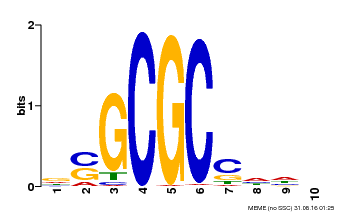- Magyar Z,Atanassova A,De Veylder L,Rombauts S,Inzé D
Characterization of two distinct DP-related genes from Arabidopsis thaliana.
FEBS Lett., 2000. 486(1): p. 79-87
[PMID:11108847] - Riechmann JL, et al.
Arabidopsis transcription factors: genome-wide comparative analysis among eukaryotes.
Science, 2000. 290(5499): p. 2105-10
[PMID:11118137] - de Jager SM,Menges M,Bauer UM,Murra JA
Arabidopsis E2F1 binds a sequence present in the promoter of S-phase-regulated gene AtCDC6 and is a member of a multigene family with differential activities.
Plant Mol. Biol., 2001. 47(4): p. 555-68
[PMID:11669580] - Mariconti L, et al.
The E2F family of transcription factors from Arabidopsis thaliana. Novel and conserved components of the retinoblastoma/E2F pathway in plants.
J. Biol. Chem., 2002. 277(12): p. 9911-9
[PMID:11786543] - Rossignol P, et al.
AtE2F-a and AtDP-a, members of the E2F family of transcription factors, induce Arabidopsis leaf cells to re-enter S phase.
Mol. Genet. Genomics, 2002. 266(6): p. 995-1003
[PMID:11862494] - Kosugi S,Ohashi Y
Interaction of the Arabidopsis E2F and DP proteins confers their concomitant nuclear translocation and transactivation.
Plant Physiol., 2002. 128(3): p. 833-43
[PMID:11891240] - Vandepoele K, et al.
Genome-wide analysis of core cell cycle genes in Arabidopsis.
Plant Cell, 2002. 14(4): p. 903-16
[PMID:11971144] - Egelkrout EM, et al.
Two E2F elements regulate the proliferating cell nuclear antigen promoter differently during leaf development.
Plant Cell, 2002. 14(12): p. 3225-36
[PMID:12468739] - Kosugi S,Ohashi Y
Constitutive E2F expression in tobacco plants exhibits altered cell cycle control and morphological change in a cell type-specific manner.
Plant Physiol., 2003. 132(4): p. 2012-22
[PMID:12913157] - Yamada K, et al.
Empirical analysis of transcriptional activity in the Arabidopsis genome.
Science, 2003. 302(5646): p. 842-6
[PMID:14593172] - Maiti B, et al.
Cloning and characterization of mouse E2F8, a novel mammalian E2F family member capable of blocking cellular proliferation.
J. Biol. Chem., 2005. 280(18): p. 18211-20
[PMID:15722552] - Magyar Z, et al.
The role of the Arabidopsis E2FB transcription factor in regulating auxin-dependent cell division.
Plant Cell, 2005. 17(9): p. 2527-41
[PMID:16055635] - Sozzani R, et al.
Interplay between Arabidopsis activating factors E2Fb and E2Fa in cell cycle progression and development.
Plant Physiol., 2006. 140(4): p. 1355-66
[PMID:16514015] - Raynaud C, et al.
Two cell-cycle regulated SET-domain proteins interact with proliferating cell nuclear antigen (PCNA) in Arabidopsis.
Plant J., 2006. 47(3): p. 395-407
[PMID:16771839] - L
Distinct light-initiated gene expression and cell cycle programs in the shoot apex and cotyledons of Arabidopsis.
Plant Cell, 2008. 20(4): p. 947-68
[PMID:18424613] - Takahashi N, et al.
The DNA replication checkpoint aids survival of plants deficient in the novel replisome factor ETG1.
EMBO J., 2008. 27(13): p. 1840-51
[PMID:18528439] - Ascencio-Ib
Global analysis of Arabidopsis gene expression uncovers a complex array of changes impacting pathogen response and cell cycle during geminivirus infection.
Plant Physiol., 2008. 148(1): p. 436-54
[PMID:18650403] - Sozzani R, et al.
The E2FD/DEL2 factor is a component of a regulatory network controlling cell proliferation and development in Arabidopsis.
Plant Mol. Biol., 2010. 72(4-5): p. 381-95
[PMID:19937368] - Boruc J, et al.
Functional modules in the Arabidopsis core cell cycle binary protein-protein interaction network.
Plant Cell, 2010. 22(4): p. 1264-80
[PMID:20407024] - Henriques R, et al.
Arabidopsis S6 kinase mutants display chromosome instability and altered RBR1-E2F pathway activity.
EMBO J., 2010. 29(17): p. 2979-93
[PMID:20683442] - Van Leene J, et al.
Targeted interactomics reveals a complex core cell cycle machinery in Arabidopsis thaliana.
Mol. Syst. Biol., 2010. 6: p. 397
[PMID:20706207] - Heckmann S, et al.
The E2F transcription factor family regulates CENH3 expression in Arabidopsis thaliana.
Plant J., 2011. 68(4): p. 646-56
[PMID:21771121] - Berckmans B, et al.
Light-dependent regulation of DEL1 is determined by the antagonistic action of E2Fb and E2Fc.
Plant Physiol., 2011. 157(3): p. 1440-51
[PMID:21908689] - Hirano H,Shinmyo A,Sekine M
Both negative and positive G1 cell cycle regulators undergo proteasome-dependent degradation during sucrose starvation in Arabidopsis.
Plant Signal Behav, 2011. 6(9): p. 1394-6
[PMID:22019639] - Heyndrickx KS,Vandepoele K
Systematic identification of functional plant modules through the integration of complementary data sources.
Plant Physiol., 2012. 159(3): p. 884-901
[PMID:22589469] - Henriques R,Magyar Z,B
S6K1 and E2FB are in mutually antagonistic regulatory links controlling cell growth and proliferation in Arabidopsis.
Plant Signal Behav, 2013. 8(6): p. e24367
[PMID:23531690] - Wu M,Liu L,Hijazi H,Chan C
A multi-layer inference approach to reconstruct condition-specific genes and their regulation.
Bioinformatics, 2013. 29(12): p. 1541-52
[PMID:23610368] - Derkacheva M, et al.
Arabidopsis MSI1 connects LHP1 to PRC2 complexes.
EMBO J., 2013. 32(14): p. 2073-85
[PMID:23778966] - Wang S, et al.
A noncanonical role for the CKI-RB-E2F cell-cycle signaling pathway in plant effector-triggered immunity.
Cell Host Microbe, 2014. 16(6): p. 787-94
[PMID:25455564] - Jin J, et al.
An Arabidopsis Transcriptional Regulatory Map Reveals Distinct Functional and Evolutionary Features of Novel Transcription Factors.
Mol. Biol. Evol., 2015. 32(7): p. 1767-73
[PMID:25750178] - Kobayashi K, et al.
Transcriptional repression by MYB3R proteins regulates plant organ growth.
EMBO J., 2015. 34(15): p. 1992-2007
[PMID:26069325]
|





